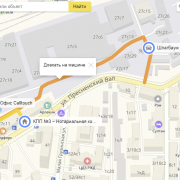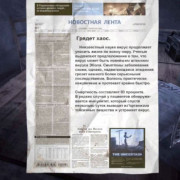Phosphor-fabric alternatives
Содержание:
How Phosphor functions in the game
The code that is in charge of propagating light alterations via the world has been remade to be more useful than the vanilla implementation.
Light updates will be postponed until all regions they interact with are questioned. Thanks to this, light updates for blocks will be grouped together. Besides, the number of copied scheduled light updates for a place is decreased.
The world gen time for modded dimensions is decreased thanks to the light update grouping. You can apply this to The Twilight Forest for instance. It features foliage as it still gives enhancements for vanilla generation and modded dimensions.
The mod fastened skylight propagation on the vertical axis to consider incoming skylight that is from adjacent chunks. This also helps to fix some lighting problems made throughout the world gen processing as well as actions relating to large numbers of blocks.
When the light data is non-trivial, the mod will send it to the client for empty chunk parts. Thanks to this, the problem of the light appearing incorrectly in empty areas of the sky is fixed.
During the process of fixing bugs in the lighting engine implementation of vanilla, some high-cost checks that were implemented before are ignored. This leads to the reduction of the overhead of these performances.
The author has spent a lot of time designing and improve the Phosphor mod. Therefore, mod incompatibilities, as well as errors, are rare.
Verbindungen
Phosphor ist sehr reaktiv und bildet mit sehr vielen Nichtmetallen kovalente Verbindungen. Dabei kommt er in allen Oxidationsstufen zwischen –3 und +5 und den Koordinationszahlen 1 bis 6, meist 3 bis 4, vor. Die Oxidationszahlen –3 und +5 sind dabei bevorzugt.
Wasserstoffverbindungen
Phosphane (die alten Bezeichnung Phosphine ist nicht mehr IUPAC-konform, wird aber in der chemischen Literatur, v. a. in der angelsächsischen, fast ausschließlich verwendet) bezeichnen Verbindungen des dreibindigen Phosphors mit Wasserstoff oder Ersatz einer oder mehrere Wasserstoffatome durch organischen Gruppen als Bindungspartner. Die organische Gruppe muss über die Kohlenstoffatome des Grundgerüstes direkt mit dem Phosphoratom verbunden sein. Wird die organische Gruppe durch ein Sauerstoffatom an das Phosphoratom gebunden (also Einheit P-O-C, z. B. im P(OPh)3), spricht man von Phosphiten.
Sauerstoffverbindungen
Mit Sauerstoff bildet Phosphor verschiedene Verbindungen, da Phosphor in mehreren Oxidationsstufen vorliegen kann. Dabei sind sowohl Phosphor-Sauerstoff-Einfachbindungen als auch Doppelbindungen sowie verbrückende Phosphor-Sauerstoff-Phosphor-Bindungen möglich.
Phosphoroxide bilden dem Adamantan ähnliche Strukturen:
- Phosphortrioxid P4O6ist eine weiße, weiche Verbindung, die sehr giftig und reaktiv ist und schnell zu Phosphorpentoxid weiterreagiert.
- Phosphortetraoxid P2O4 ist ein Mischoxid. Man kann es durch Oxidation von Phosphortrioxid in Tetrachlorkohlenstoff gewinnen.
- Phosphorpentoxid P4O10 ist das wichtigste Phosphoroxid. Es ist sehr hygroskopisch und wird als Trocknungsmittel verwendet.
Von diesen Oxiden können eine große Zahl von Phosphor-Sauerstoff-Säuren und ihre entsprechenden Salze mit einem oder mehreren Phosphoratomen abgeleitet werden.
| Oxidationsstufedes Phosphors | Strukturformel | Name der Säure | Name der Salze |
|---|---|---|---|
| Monophosphorsäuren | |||
| +I | Phosphinsäure | Phosphinate | |
| +III | Phosphonsäure | Phosphonate | |
| +V | Phosphorsäure | Phosphate | |
| +V | Peroxophosphorsäure | Peroxophosphate | |
| Diphosphorsäuren | |||
| +II | Hypodiphosphonsäure | Hypodiphosphonate | |
| +III | Diphosphonsäure | Diphosphonate | |
| +IV | Hypodiphosphorsäure | Hypodiphosphate | |
| +V | Diphosphorsäure | Diphosphate | |
| +V | Peroxodiphosphorsäure | Peroxodiphosphate |
Es gibt eine Reihe von phosphorhaltigen Mineralien, die wichtigsten sind dabei Hydroxylapatit und Fluorapatit. Weitere Phosphormineralien findet man in der Kategorie:Phosphormineral.
Halogenverbindungen
Phosphor bildet eine große Zahl von Verbindungen mit den Halogeniden Fluor, Chlor, Brom und Iod. Die wichtigsten Verbindungentypen sind dabei PX3, P2X4 und PX5. Die Fluorverbindungen sind gasförmig, die Chlorverbindungen meist flüssig, Brom- und Iodverbindungen fest. Viele Phosphorhalogenverbindungen sind giftig.
Beispiele für diese Verbindungsklasse sind Phosphortrichlorid und Phosphorpentachlorid
weitere Phosphorverbindungen
Phosphor bildet mit Schwefel eine Reihe von Verbindungen, die in ihrer Struktur z. T. den Phosphor-Sauerstoff-Verbindungen ähneln. Sie haben allgemein die Struktur P4Sx (x = 3–10). Auch Verbindungen mit Selen sind bekannt.
Stickstoff bildet mit Phosphor Nitride der Zusammensetzung PN und P3N5.
Organische Verbindungen
Organische Phosphorverbindungen und dabei vor allem Triphenylphosphin spielen in vielen organischen Reaktionen, z. B. der Wittig-Reaktion eine wichtige Rolle.
In der Biochemie sind vor allem die Phosphorsäureester relevant. Sie sind lebenswichtiger Teil von vielen Stoffwechselprozessen und Teil der DNA. Wichtige Moleküle sind:
- ADP, ATP, AMP
- GTP, GDP, GMP
- Phospholipide
Nachweis
Spektroskopisch
Die Methode der Wahl für den Nachweis von Phosphorverbindungen ist die 31P-NMR-Spektroskopie. 31P ist das einzige natürlich vorkommende Phosphor-Isotop und hat eine Kernspin-Quantenzahl von 1/2. Im Vergleich zum Wasserstoff beträgt die relative Empfindlichkeit nur 6,6 %. Der Resonanzbereich beträgt ca. 700 ppm (P4 hat beispielsweise eine Verschiebung von −488 ppm). Als Standard wird im Allgemeinen 85%ige Phosphorsäure verwendet. Da Phosphor ein Spin-1/2-Kern ist, sind die Spektren sehr gut auszuwerten. Wenn zusätzlich der Wasserstoff entkoppelt wird, resultiert meist ein scharfes Signal. Die Phosphorverschiebung ist stark abhängig von seinen Bindungspartner, er ist also sehr gut für die Identifikation von bekannten Verbindungen geeignet. Bei unbekannten Verbindungen ist die Aussagekraft oft beschränkt, weil einem Spektrenbereich nur selten einer Verbindungsklasse exklusiv zuzuordnen ist.
| Derivate mit | Chemische Verschiebung (δ in ppm) |
|---|---|
| 3-bindigem P | −180 bis +200 |
| 4-bindigem P | −120 bis +130 |
| 5-bindigem P | −100 bis −20 |
| 6-bindigem P | −220 bis −130 |
Nasschemisch
Die quantitative und qualitative Bestimmung von Phosphor erfolgt über das Phosphat (genauer Orthophosphat PO43−). Gebundener Phosphor wird hierzu gegebenenfalls durch oxidierenden Aufschluss in Phosphat überführt.
Qualitativer Nachweis
Bei der Nachweisreaktion mit Ammoniummolybdat erhält man in saurer Lösung einen gelben Niederschlag von Ammoniummolybdophosphat:
In alkalischer Ammoniaklösung fällt Phosphat bei Anwesenheit von Magnesium-Ionen als Magnesiumammoniumphosphat aus:
Der Nachweis ist auch in Form von Zirconiumhydrogenphosphat durchführbar:
Nicht korrekt ist, wie in vielen Lehrbüchern angegeben, die Form Zr3(PO4)4, in wässrigen Lösungen bildet sich diese Verbindung nicht!
Historisch ist die Mitscherlich Probe zum Nachweis von weißem Phosphor interessant, die allem voran bei vermuteten Phosphorvergiftungen eingesetzt wurde. Hierbei wird der Mageninhalt mit Wasser erhitzt, wobei der weiße Phosphor, der mit dem Wasserdampf flüchtig ist, anschließend kondensiert und bei Berührung mit Luftsauerstoff durch ein Leuchten (Chemolumineszenz) in Erscheinung tritt.
Bei Strukturuntersuchungen von Verbindungen, in denen Phosphor enthalten ist, eignet sich die 31P-Kernresonanzspektroskopie.
Gravimetrie
Für eine gravimetrische Bestimmung kann aus Phosphat und Molybdationen in stark salzsaurer Lösung ein gelbes Molybdophosphation gebildet werden:
Mit 8-Hydroxychinolin (kurz HOx oder Oxin genannt) bildet sich ein schwer löslicher Niederschlag von Oxin-12-molybdo-1-phosphat, der anschließend bei 160 °C getrocknet und in wasserfreier Form gewogen wird.
Fällungsform:
Wägeform:
- (H2Ox)3[P(Mo3O10)4] (Farbe: dunkelorange)
Der grobkristalline Niederschlag enthält nur 1,37 % Phosphor. Somit sind vor allem kleinere Phosphatmengen gut bestimmbar (siehe Mikromol-Verfahren).
Volumetrie
Volumetrische Phosphatbestimmungen werden durch Fällung mit La3+ oder mit Bi3+-Maßlösungen und anschließender Rücktitration mit EDTA durchgeführt.
Colorimetrie/Photometrie
Für die Bestimmung geringer Konzentrationen an Phosphat in Süßwasserproben wird ein tiefblauer Antimon-Phosphormolybdat-Komplex gebildet, der seine intensive Färbung erst durch ein Reduktionsmittel, meist Ascorbinsäure, erhält. Damit sind empfindliche Nachweise bis in den Bereich von ca. 0,6 mg PO4/l (ca. 0,2 mg P/l) möglich.
Das Verfahren ist in EN 1189:1996 (früher DIN 38405 D11) normiert.
Fabric 1.17.X
| Name | Known Incompatibilities | Description | Author | Performance Improvement |
|---|---|---|---|---|
| Unknown | Fabric mod for completely rewriting the vanilla light engine. | Spottedleaf (PaperMC) | Both | |
| Mods that remove the DFU | LazyDFU is an optimization mod that makes the initialization of DataFixerUpper «lazy» | astei | Both | |
| Unknown | Optimize Minecraft loading performance to be smoother on low end systems and scale better on high end systems | UltimateBoomer | Both | |
| Unknown | This mod reduces the memory usage of Minecraft in a few different ways | malte0811 | Both | |
| Unknown | Clumps groups XP orbs together into a single entity to reduce lag when there are many in a small area. | jaredlll08 | Both | |
| Mods that utilize of the FRAPI | Sodium is a free and open-source rendering engine replacement for the Minecraft client that greatly improves frame rates, reduces micro-stutter, and fixes graphical issues in Minecraft | CaffeineMC | Client | |
| Enhanced Block Entities | This mod launches minecraft faster by caching all of the content on first launch and then loading that cache on the next one | alphaqu | Client | |
| Sodium | Advanced Rendering Engine for Fabric | grondag | Client | |
| Unknown | Reduces the memory usage of the game in more modded scenarios | CaffeineMC | Client | |
| None | EntityCulling using async path-tracing to skip rendering Tiles/Entities that are not visible | tr9zw | Client | |
| Unknown | Adds culling to leaf blocks, providing a huge performance boost over vanilla. | Motschen | Client | |
| Sodium, DashLoader | EBE is a mod which aims to increase the performance of block entity rendering, as well as offer customizability via resource packs. | FoundationGames | Client | |
| Unknown | Allows the user to adjust the (client) distance at which different entities render | capnkork | Client | |
| Unknown | Removes the Block Entity Renderer from the bed and replaces it with the default minecraft model renderer. | Motschen | Client | |
| Unknown | This mod helps by removing dynamic models from chests and making them render as static chunk geometry. | fake_domi | Client | |
| Sodium | Better Biome Blend is a mod which accelerates the biome color blending algorithm. | FionaTheMortal | Client | |
| Unknown | ResolutionControl+ allows you to change Minecraft’s render resolution separately from the HUD elements. | Ultimate Boomer | Client | |
| Unknown | This is to prevent client-side lag and general annoyance when using large numbers of campfires in farms. | supersaiyansubtlety | Client | |
| None | Lithium is a general-purpose optimization mod for Minecraft which works to improve a number of systems without changing any behavior | CaffeineMC | Server | |
| Unknown | Krypton is a Minecraft mod designed for the Fabric mod loader that implements a suite of optimizations focused on the Minecraft networking stack | astei | Server | |
| C2ME (DANGEROUS) | Tic-Tacs, + | A Fabric mod designed to improve the chunk performance of Minecraft. | YatopiaMC | Server |
| Dimensional Threading (Dangerous) | Unknown | Minecraft mod which optimizes the processing of multiple Dimensions, by assigning them independent threads | WearBlackAllDay | Server |
| Unknown | Alternate Current is an efficient and non-locational redstone dust implementation | Space Walker | Server | |
| None | Similar to FastWorkbench, it caches the last recipe used, and checks this recipe first before re-scanning the entire registry | tfarecnim | Server | |
| FastFurnace, FastBench (?) | Caches recipe lookup for crafting and furnaces to lessen server lag caused by crafting stacks of items and large amounts of furnaces ticking | biom4st3r1 | Server | |
| Unknown | A fabric mod that aims to optimize & add multiplayer features to the minecraft server. | Wesley1808 | Server |
Phosphor can be used with a variety of mods
You can use the mod with other mods for a better experience, for instance:
OptiFine: The mod is consistent with OptiFine. This also includes the Dynamic Lights feature performed by OptiFine.
OpenCubicChunks: Because this mod performs its own light propagation system, Phosphor can be consistent with it too.
DynamicLights: This mod needs to have the above mod to function in the game.
Albedo: Both mods perform their own lighting system. Due to this, the light system of Albedo has to be overwritten. As you install both mods together, you can load the game. The colored lights will be stopped from working.
SpongeForge: Both mods function together with the latest editions of SpongeForge on version 1.12.2. The main mod will not function if you install the older version of SpongeForge. Besides, you have to turn off the asynchronous lighting in the configuration file of Sponge.
Phosphor runs well in your modpack. You don’t need to ask the author for permission to use it.
Forge 1.7.10
| Name | Known Incompatibilities | Description | Author | Performance Improvement |
|---|---|---|---|---|
| None | BetterFps is a Minecraft mod that add a few performance improvements, trying to be compatible with other mods. | Guichaguri | Both | |
| Forge Essentials | FastCraft is a sophisticated mod which improves the client and server performance significantly without any game play changes. | sfPlayer1 | Both | |
| None | FoamFix is a mod designed to optimize post-1.7.10 modded Minecraft using simple, targeted optimizations. | asiekierka | Both | |
| Unknown | Configuration options | skyboy026 (TeamCoFH) | Both | |
| Unknown | Prevents squids spawning in regions where they would instantly despawn | hilburn | Server |
Similar projects and alternatives to phosphor-fabric
-
9
1,054
9.0
Java
phosphor-fabric VS lithium-fabric
A Fabric mod designed to improve the general performance of Minecraft without breaking things
-
6
2,741
9.1
Java
phosphor-fabric VS sodium-fabric
A Fabric mod designed to improve frame rates and reduce micro-stutter
-
sponsored
Scout APM: A developer’s best friend. Try free for 14-days.
Scout APM uses tracing logic that ties bottlenecks to source code so you know the exact line of code causing performance issues and can get back to building a great product faster. -
3
1,643
9.8
Java
phosphor-fabric VS Iris
(WIP) A new shaders mod for Minecraft intended to be compatible with existing ShadersMod/Optifine shaders (by IrisShaders)
-
2
718
7.0
Java
phosphor-fabric VS Starlight
Rewrites the light engine to fix lighting performance and lighting errors [Moved to: https://github.com/PaperMC/Starlight] (by Spottedleaf)
-
1
897
6.3
Java
phosphor-fabric VS Starlight
Rewrites the light engine to fix lighting performance and lighting errors
-
4
457
5.0
Java
phosphor-fabric VS hydrogen-fabric
Things of which are too dangerous to put in Lithium.
-
1
145
6.4
Java
phosphor-fabric VS LambDynamicLights
A dynamic lights mod for Minecraft with Fabric.
-
sponsored
Run Linux Software Faster and Safer than Linux with Unikernels.
-
1
77
6.1
Java
phosphor-fabric VS LambdaBetterGrass
A better grass mod for Minecraft.
-
—
109
7.0
Java
phosphor-fabric VS Dynamic-FPS
Improve performance when Minecraft is in the background
-
1
15,565
8.7
C++
phosphor-fabric VS Proton
Compatibility tool for Steam Play based on Wine and additional components
-
1
1,737
0.0
Python
phosphor-fabric VS cadmus
A GUI frontend for @werman’s Pulse Audio real-time noise suppression plugin
-
1
837
9.5
Java
phosphor-fabric VS FarPlaneTwo
Level-of-Detail renderer in Minecraft. Allows for render distances of millions of blocks. (Cubic Chunks-compatible) (WIP)
-
1
652
4.0
C++
phosphor-fabric VS vkBasalt
a vulkan post processing layer for linux
-
1
183
2.0
Java
phosphor-fabric VS tic-tacs
Experimental mod to improve Minecraft’s chunk loading performance as well as allow for multithreading. Currently inactive.
-
1
114
5.1
Java
phosphor-fabric VS lazydfu
Fabric mod that makes Minecraft DataFixerUpper initialization lazy
-
1
71
6.3
Java
phosphor-fabric VS OkZoomer
Adds a highly-configurable zoom key for Fabric. The zoom is yours!
-
1
68
0.2
Java
phosphor-fabric VS cadmium-fabric
An optimization mod for DataFixerUpper with the goal to make game startup take less time.
-
1
50
5.1
Java
phosphor-fabric VS mc-smoothboot
Tweak threads and thread factories used by Minecraft
-
1
47
2.4
Java
phosphor-fabric VS radon-fabric
Highly experimental and unstable alternative world format for Minecraft
NOTE:
The number of mentions on this list indicates mentions on common posts plus user suggested alternatives.
Hence, a higher number means a better phosphor-fabric alternative or higher similarity.
ЧАСТО ЗАДАВАЕМЫЕ ВОПРОСЫ
1. Почему мой FPS все еще такой низкий?
Вы можете отключить Vsync и увеличить свой максимальный FPS в разделе Параметры видео. Настройки по умолчанию настроены так, чтобы максимально соответствовать визуальным эффектам Vanilla. Вы можете настроить параметры, чтобы включить/отключить параметры, чтобы полностью максимизировать производительность за счет визуальной четности. Приведенные ниже настройки обязательно следует установить, если вы хотите максимизировать частоту кадров в секунду:
Общие
- Расстояние рендеринга: как можно меньше
- Использовать VSync: Отключено
- Максимальная частота кадров: Неограничена
Передовой
- Сортировка по прозрачности: Отключена
- Использование Отбраковки Листьев: Включено


2. Я вижу границы пикселей и/или блики вокруг случайных блоков!
Это связано с функцией компактного формата вершин. Вы можете отключить это в разделе Параметры видео -> Дополнительно

3. Мировой ген прозрачен или невидим
Если это для отдельных блоков, то, скорее всего, это ошибка, и вы можете отправить сообщение о проблеме. Если весь мир выглядит странно, возможно, ваш графический процессор не поддерживает рендеринг с несколькими отрисовками, и в этом случае вы можете изменить рендеринг на Oneshot 3.3 или 2.0 в разделе Настройки видео- > Дополнительно.> Существует также проблема с полупрозрачными блоками, если у вас есть Сказочные! настройки включены. Попробуйте использовать быстро или необычно
4. Можете ли вы добавить совместимость для______?
Если вы добавите Оптифин/Перформант/Хлор/Другую вилку натрия, нет. Оптифин/Хлор/Другие вилки изменяют/заменяют трубопровод рендеринга, точно так же, как это делает натрий. Невозможно сделать их совместимыми, так как все они пытаются перезаписать ванильный код в одних и тех же местах, но разными способами. Совместимость с производительностью не будет поддерживаться. Видишь https://github.com/spoorn/sodium-forge/issues/23#issuecomment-863807223.
Если вы поставите другие моды, да! Я работаю над этим. Вы можете помочь, если у вас есть пропускная способность, не стесняйтесь отправлять запрос на вывод.
5. Поддерживает ли это шейдеры? Шейдеры радужной оболочки/Оптифина?
Не в данный момент. Я бы с удовольствием поддержал шейдеры, но это большая работа, на которую у меня пока нет времени.
6. Вы вернетесь на 1.12.2? 1.8.9? 1._._? Будет ли это доступно для 1.17?
В настоящее время нет планов обратного переноса, в текущей версии все еще предстоит выполнить множество улучшений, и обратный перенос-утомительная задача.
Forge еще не вышел на 1.17, так что мы все этого ждем.
7. Это сломано! Это не работает! Можете ли вы добавить это?
Не стесняйтесь добавлять комментарий ниже или создавать проблему в https://github.com/spoorn/sodium-forge/issues. Я прохожу через все, но мне может потребоваться некоторое время, чтобы добраться до этого, потому что я все еще изучаю, как работает графическое программирование, и у меня есть работа на полный рабочий день!
P.S. Я получил разрешение от автора порта Forge опубликовать это на Curseforge, так как мне это было нужно для публикации моего собственного модпака! Это также разрешено в соответствии с лицензией
Biologische Bedeutung
Physiologie
Phosphor ist für alle biologischen Organismen essentiell. Phosphorverbindungen sind Bestandteil der DNA- und RNA-Moleküle, der Trägersubstanz der Erbinformationen aller Lebewesen. Die stark phosphorhaltige Verbindung Adenosintriphosphat spielt eine entscheidende Rolle beim Energiestoffwechsel (aktivierte Zucker) der Zellen. Phosphor ist weiterhin in Zuckerphosphaten, Phospholipiden und Coenzymen enthalten. Die Phosphorylierung ist einer der wichtigsten Regulationsmechanismen in Organismen. Phosphate sind auch ein elementarer Bestandteil des pH-Puffersystems im Blut.
Die Trockenmasse von terrestrischen Pflanzen enthält ca. 0,2 % Phosphor (Epstein 1972, 1994 (1)), die von Säugetieren wie Menschen ca. 4 %. Die Gerüstsubstanz von Knochen und Zähnen besteht hauptsächlich aus Hydroxylapatit (Ca5(PO4)3OH). Der Körper eines Menschen von 70 kg Gewicht enthält etwa 700 Gramm Phosphor, wovon 600 g fest im Knochensystem gebunden sind.
Der Tagesbedarf eines erwachsenen Menschen beträgt ca. 0,75 Gramm Phosphor, vor allem in Milchprodukten, Fleisch, Fisch und Brot ist er reichhaltig vorhanden. Die Phosphatverfügbarkeit wirkt für Pflanzen vielfach als limitierender Wachstumsfaktor, weswegen in der Landwirtschaft große Mengen phosphathaltigen Düngers ausgebracht werden müssen.
Weißer Phosphor und einige Phosphorverbindungen wie Phosphan sind sehr giftig.
(1) Taiz, Zeiger: Physiologie der Pflanzen (1998)
Ökologie
Phosphor ist wegen seiner unverzichtbaren physiologischen Rolle einer der wichtigsten Pflanzennährstoffe. Allerdings neigen die in der Natur hauptsächlichen Phosphorvorkommen, die Phosphate, zur Bildung schwer löslicher und damit schwer verfügbarer Verbindungen. Trotz seines vergleichsweise geringen Bedarfsmengenanteils gerät Phosphor deshalb meist in die Rolle des „Limitierenden Faktors“ entsprechend Liebigs Minimumgesetz.
Die Landwirtschaft reagiert auf diese Tatsache mit dem Ausbringen von phosphathaltigen Düngemitteln, um den Pflanzenertrag zu steigern.
In den Gewässern hängt die Produktion von Biomasse meist direkt mit der verfügbaren Menge an Phosphor zusammen. Steigerungen des Phosphoreintrags in Seen führen deshalb zur Eutrophierung. Ganz allgemein beurteilt man den Zustand von Seen nach ihrem „Nährstoffgehalt“ und dessen Folgen für das Wachstum von Algen, und meint damit praktisch immer den verfügbaren Phosphorgehalt. Auch in den Flüssen spielt Phosphor eine wichtige eutrophierende Rolle. Deshalb wird in neueren Kläranlagen durch gesonderte P-Rückhaltestufen das bei der Klärung entstehende Phosphat ausgefällt.
Wegen der ökologisch zentralen Bedeutung des Phosphats spielt auch die quantitative Phosphoranalytik eine wichtige Rolle in der Praxis der chemischen Gewässerüberwachung.
Geschichte
Phosphor wurde 1669 von Hennig Brand, einem deutschen Apotheker und Alchemisten, entdeckt, als dieser – auf der Suche nach dem „Stein der Weisen“ – Urin bis zur Trocknung eindampfte. Als er den Rückstand unter Luftabschluss glühte, entstand durch Reduktion mit organischer Materie weißer Phosphor, der im Dunkeln aufgrund der Phosphoreszenz leuchtete. Obwohl Phosphor zu dieser Zeit noch keine Verwendung außer als Nachtlampe fand, wurde es mit Gold aufgewogen. Hennig Brand wurde durch diese Entdeckung nicht reich und verkaufte das Herstellungsrezept an einen Alchemisten, der hiermit ein Vermögen machte. Johann Daniel Kraft, besagter Alchimist, demonstrierte die Herstellung von Phosphor 1677 vor Robert Boyle.
Weißer Phosphor wurde anfangs auf Grund seiner faszinierenden Eigenschaft der Phosphoreszenz als Heilmittel verwendet. Später spielte er eine wichtige Rolle bei der Streichholzherstellung; da weißer Phosphor hochgiftig ist, kam es jedoch oft zu schweren Vergiftungen bei Arbeitern.
Weißer Phosphor spielte in der Militärgeschichte als Waffe eine Rolle. Dieser wurde als Füllmaterial von Brandbomben, den sogenannten Phosphorbomben verwendet. So setzte die britische Luftwaffe im Zweiten Weltkrieg ein Gemisch aus weißem Phosphor und Kautschuk ein. Durch den Kautschuk klebt die zähflüssige Masse und lässt sich deshalb schlecht abstreifen. Sie verursacht auf der Haut schlecht heilende Wunden.
Im Boden
Auf natürlichem Wege gelangt Phosphor einerseits über die Apatit-Verwitterung in den Boden oder aber aus zersetzter organischer Materie. Die atmosphärische Deposition spielt bei Phosphor nur eine untergeordnete Rolle. Durch Düngung erhöht der Mensch aktiv den Phosphorgehalt im Boden meist über Phosphate.
Als Hauptfaktoren der Verluste kann die Erosion betrachtet werden. Die Auswaschung ist sehr gering und abgesehen von Phosphan-Gas kommt es zu keiner Ausgasung aus dem Boden.
Phosphor besitzt eine sehr schlechte Löslichkeit. So führt zum Beispiel eine Adsorption an Fe und Al Hydroxide in sauren Böden zu einer Phosphatfixierung. In basischen Böden kommt es zu einer Ausfällung mit Ca.
Generell kann man zwischen drei unterschiedlichen Phosphatfraktionen im Boden unterscheiden:
- In der Bodenlösung verfügbares Phosphat ist direkt pflanzenverfügbar. Jedoch ist diese mit 1–2 kg/ha die kleinste Fraktion.
- Labiles Phosphat ist durch spezifische Sorption an Eisen- und Aluminium-Oxide oder an Tonminerale locker gebunden. 450–900 kg/ha können so im Boden vorliegen. Durch Resorption kann aus dieser Fraktion bodenverfügbares Phosphat gebildet werden.
- Stabiles Phosphat hat praktisch keine Bedeutung für die Pflanzenernährung, obwohl es mit 3000–6000 kg/ha die größte der drei Fraktionen ist. Als wichtigste Vertreter seien hier Apatite und Calciumphosphate genannt.
Biologische Bedeutung
Physiologie
Phosphor ist für alle biologischen Organismen essentiell. Phosphorverbindungen sind Bestandteil der DNA- und RNA-Moleküle, der Trägersubstanz der Erbinformationen aller Lebewesen. Die stark phosphorhaltige Verbindung Adenosintriphosphat spielt eine entscheidende Rolle beim Energiestoffwechsel (aktivierte Zucker) der Zellen. Phosphor ist weiterhin in Zuckerphosphaten, Phospholipiden und Coenzymen enthalten. Die Phosphorylierung ist einer der wichtigsten Regulationsmechanismen in Organismen. Phosphate sind auch ein elementarer Bestandteil des pH-Puffersystems im Blut.
Die Trockenmasse von terrestrischen Pflanzen enthält ca. 0,2 % Phosphor (Epstein 1972, 1994 (1)), die von Säugetieren wie Menschen ca. 4 %. Die Gerüstsubstanz von Knochen und Zähnen besteht hauptsächlich aus Hydroxylapatit (Ca5(PO4)3OH). Der Körper eines Menschen von 70 kg Gewicht enthält etwa 700 Gramm Phosphor, wovon 600 g fest im Knochensystem gebunden sind.
Der Tagesbedarf eines erwachsenen Menschen beträgt ca. 0,75 Gramm Phosphor, vor allem in Milchprodukten, Fleisch, Fisch und Brot ist er reichhaltig vorhanden. Die Phosphatverfügbarkeit wirkt für Pflanzen vielfach als limitierender Wachstumsfaktor, weswegen in der Landwirtschaft große Mengen phosphathaltigen Düngers ausgebracht werden müssen.
Weißer Phosphor und einige Phosphorverbindungen wie Phosphan sind sehr giftig.
(1) Taiz, Zeiger: Physiologie der Pflanzen (1998)
Ökologie
Phosphor ist wegen seiner unverzichtbaren physiologischen Rolle einer der wichtigsten Pflanzennährstoffe. Allerdings neigen die in der Natur hauptsächlichen Phosphorvorkommen, die Phosphate, zur Bildung schwer löslicher und damit schwer verfügbarer Verbindungen. Trotz seines vergleichsweise geringen Bedarfsmengenanteils gerät Phosphor deshalb meist in die Rolle des „Limitierenden Faktors“ entsprechend Liebigs Minimumgesetz.
Die Landwirtschaft reagiert auf diese Tatsache mit dem Ausbringen von phosphathaltigen Düngemitteln, um den Pflanzenertrag zu steigern.
In den Gewässern hängt die Produktion von Biomasse meist direkt mit der verfügbaren Menge an Phosphor zusammen. Steigerungen des Phosphoreintrags in Seen führen deshalb zur Eutrophierung. Ganz allgemein beurteilt man den Zustand von Seen nach ihrem „Nährstoffgehalt“ und dessen Folgen für das Wachstum von Algen, und meint damit praktisch immer den verfügbaren Phosphorgehalt. Auch in den Flüssen spielt Phosphor eine wichtige eutrophierende Rolle. Deshalb wird in neueren Kläranlagen durch gesonderte P-Rückhaltestufen das bei der Klärung entstehende Phosphat ausgefällt.
Wegen der ökologisch zentralen Bedeutung des Phosphats spielt auch die quantitative Phosphoranalytik eine wichtige Rolle in der Praxis der chemischen Gewässerüberwachung.
Fabric 1.16+
| Name | Known Incompatibilities | Description | Author | Performance Improvement |
|---|---|---|---|---|
| Starlight | Phosphor is a Minecraft mod which works to optimize one of game’s most inefficient areas, the lighting engine | CaffeineMC | Both | |
| Starlight | Phosphor | Fabric mod for completely rewriting the vanilla light engine. | Spottedleaf (PaperMC) | Both |
| Mods that remove the DFU | LazyDFU is an optimization mod that makes the initialization of DataFixerUpper «lazy» | astei | Both | |
| Unknown | Optimize Minecraft loading performance to be smoother on low end systems and scale better on high end systems | UltimateBoomer | Both | |
| Hydrogen, Enhanced Block Entities | This mod launches minecraft faster by caching all of the content on first launch and then loading that cache on the next one | alphaqu | Client | |
| Unknown | This mod reduces the memory usage of Minecraft in a few different ways | malte0811 | Both | |
| VanillaFix | Unknown | Bug fixes and optimizations for Minecraft | BoogieMonster1O1 (Dimensional Development) | Both |
| Mods that utilize of the FRAPI | Sodium is a free and open-source rendering engine replacement for the Minecraft client that greatly improves frame rates, reduces micro-stutter, and fixes graphical issues in Minecraft | CaffeineMC | Client | |
| Sodium | Advanced Rendering Engine for Fabric | grondag | Client | |
| DashLoader | Reduces the memory usage of the game in more modded scenarios | CaffeineMC | Client | |
| None | EntityCulling using async path-tracing to skip rendering Tiles/Entities that are not visible | tr9zw | Client | |
| Unknown | Allows the user to adjust the (client) distance at which different entities render | capnkork | Client | |
| Unknown | Adds culling to leaf blocks, providing a huge performance boost over vanilla. | Motschen | Client | |
| Sodium, DashLoader | EBE is a mod which aims to increase the performance of block entity rendering, as well as offer customizability via resource packs. | FoundationGames | Client | |
| Unknown | Removes the Block Entity Renderer from the bed and replaces it with the default minecraft model renderer. | Motschen | Client | |
| Unknown | This mod helps by removing dynamic models from chests and making them render as static chunk geometry. | fake_domi | Client | |
| Sodium | Better Biome Blend is a mod which accelerates the biome color blending algorithm. | FionaTheMortal | Client | |
| Unknown | ResolutionControl+ allows you to change Minecraft’s render resolution separately from the HUD elements. | Ultimate Boomer | Client | |
| Unknown | This is to prevent client-side lag and general annoyance when using large numbers of campfires in farms. | supersaiyansubtlety | Client | |
| Unknown | Fixes MC-192362 / MC-189565, which causes drastically large log file sizes and lag | Client | Draylar | |
| None | Lithium is a general-purpose optimization mod for Minecraft which works to improve a number of systems without changing any behavior | CaffeineMC | Server | |
| Hopper Optimizations | Unknown | A mod that optimizes hoppers and their interactions with entities and inventories | 2No2Name | Server |
| Unknown | Krypton is a Minecraft mod designed for the Fabric mod loader that implements a suite of optimizations focused on the Minecraft networking stack | astei | Server | |
| Unknown | Optimization mod that generates overworld and nether terrain much faster than vanilla minecraft at the cost of breaking parity. | gegy1000, SuperCoder79 | Server | |
| Tic-Tacs (Dangerous) | C2ME | Tic-TACS is an experimental reimplementation of Minecraft’s chunk loading engine | gegy | Server |
| C2ME (DANGEROUS) | Tic-Tacs, + | A Fabric mod designed to improve the chunk performance of Minecraft. | YatopiaMC | Server |
| Carpet, Dimensional Threading | This is a mod, that attempts to multithread minecraft’s tick execution. | himekifee | Server | |
| Dimensional Threading (Dangerous) | Unknown | Minecraft mod which optimizes the processing of multiple Dimensions, by assigning them independent threads | WearBlackAllDay | Server |
| Unknown | This mod makes it so that nearby experience orbs merge together | NinjaPhenix | Server | |
| None | This is a mod aimed at improving performance of all crafting-related functions. | tfarecnim | Server | |
| None | Similar to FastWorkbench, it caches the last recipe used, and checks this recipe first before re-scanning the entire registry | tfarecnim | Server | |
| FastFurnace, FastBench (?) | Caches recipe lookup for crafting and furnaces to lessen server lag caused by crafting stacks of items and large amounts of furnaces ticking | biom4st3r1 | Server |
Forge 1.17.X
| Name | Known Incompatibilities | Description | Author | Performance Improvement |
|---|---|---|---|---|
| Unknown | Clumps groups XP orbs together into a single entity to reduce lag when there are many in a small area. | jaredlll08 | Both | |
| Unknown | This mod adds two configuration options to control how dropped items combine on the ground. This can significantly improve performance in areas with lots of dropped items | bl4ckscor3 | Server | |
| APTweaks | This is a small/light serverside utility mod to help balancing lag (TPS) and chunk view/load distance. | someaddon | Server | |
| None | Simplified AI modification mod focused on performance and low-level modifications to AIs in the game | QueenOfMissiles | Server |






